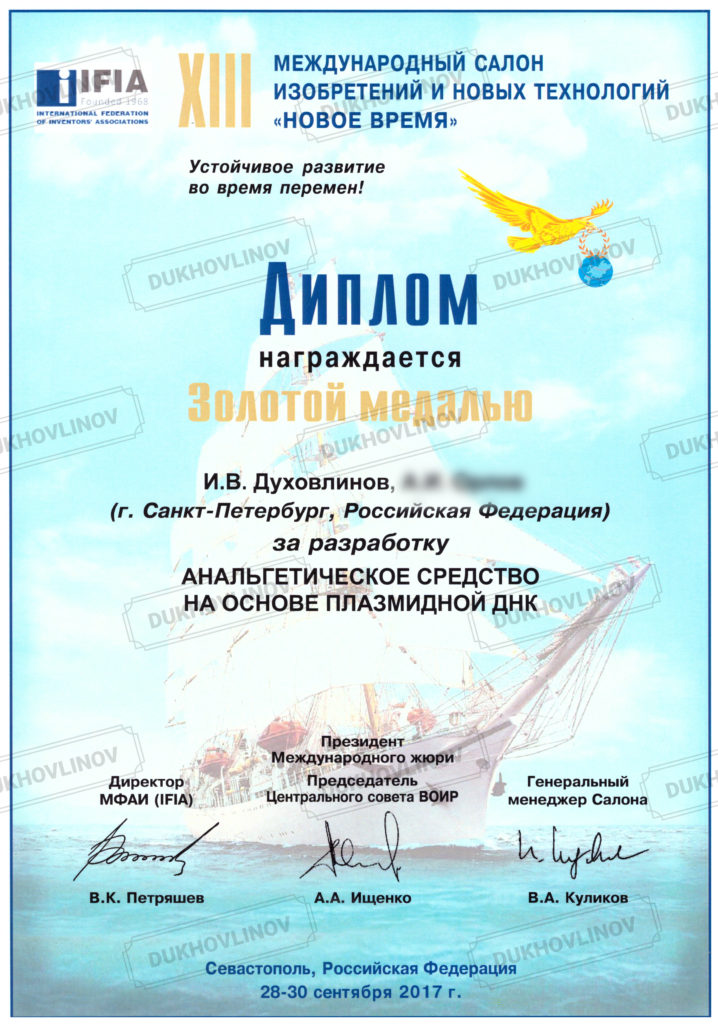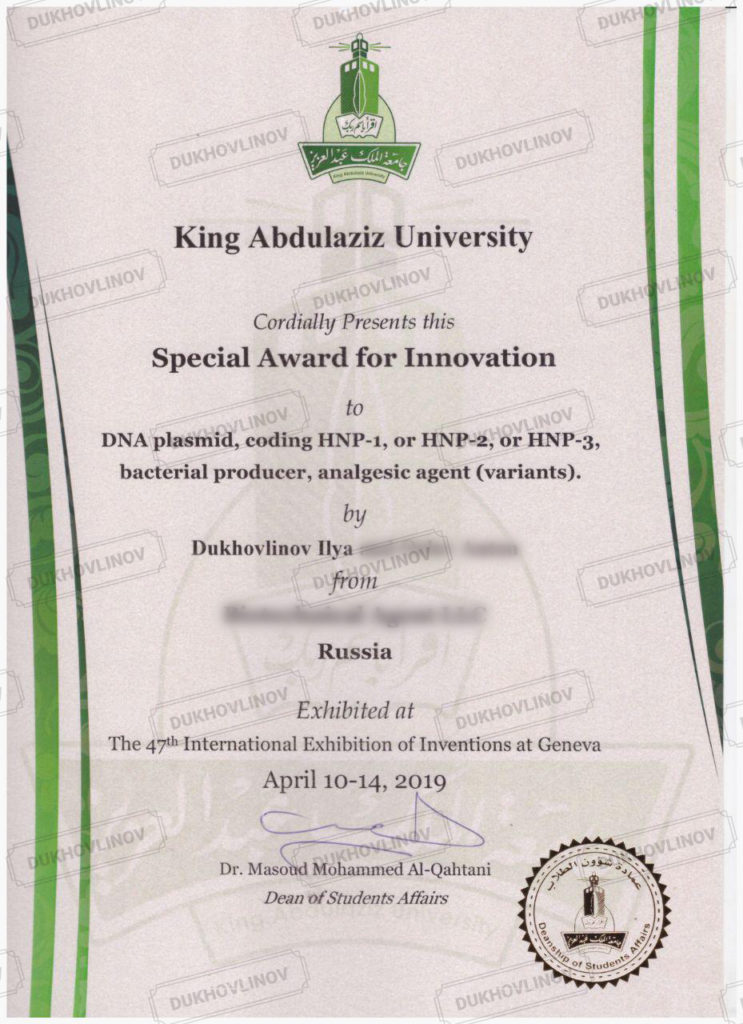ANALGESIC
International application PCT/RU2018/050128, priority 26.11.2017
International application PCT/RU2015/000756, priority 10.11.14
Patents for invention


Patent applications for inventions
- Eurasia No.20170092364 stated 26.11.2017,
- Eurasia No. 201790929 stated 10.11.2015,
- US No. 2018057837 stated 10.11.15,
- Korea No. 20177015883 stated 10.11.2015,
- China No. 2015872724 stated 07.07.2017,
- Hong Kong No. 18103246.6 stated 07.07.2017,
- Japan No. 2017535288 stated 09.05.17,
- BrazilNo.112017009607 2 stated 08.05.2017,
- India No. 201717019831 stated 06.06.2017,
- Israel No. 252730, stated 06.06.2017
Variants of analgesi care given–a plasmid DNA encoding a human defensin and plasmid DNA encoding endorphin.
The result of the use of variants of the invention is expressed in expanding the range of analgesic products, induration increase of analgesia,in safety in crease of analgesia,in the simplification and cheapening of the production of analgesic
Increase of the duration of analgesia is achieved by the fact that
- a plasmid DNA is used,from which a protein is synthesized after the introduction of the body;
- a nucleotide sequence encoding the protein contains elements that determine the stability ofmRNA and, accordingly, increase the half-life of mRNA, as a result the protein synthesis fromone mRNA molecule is carried out more times, and as a result, the amount of synthesized protein increases;
- the nucleotide sequence of the target gene is codon-optimized for expression in mammalian cells, resulting in more intense protein synthesis.
When implemented into practice, it will significantly reduce the amount of injected plasmid DNA (10-50times), compared with doses currently used in domestic and world practice in gene therapy
Increasing the safety of analgesia is achieved by
- the active substance usedis a plasmid DNA, which exists in the form of an episome and does notintegrate into the genome,from which a protein is synthesized and then secreted from thehuman cell, as a result of non-immunogenic, safe use of the target human protein for analgesia is provided.
- protein synthesized in the body from the plasmid DNA undergoes natural posttranslational processing, and the correct protein fold ingisprovided due to cell chaperones.
- natural mechanisms of metabolism and catabolism of the active substance are used, with out the formation of toxic products, due tothe natural originof the plasmid structure and the protein encoded by it, as well as the identity of the resulting protein to the endogenous analog.
- plasmid DNA is not replicated after introduction into the mammalian body, which allows control over the amount of protein synthesized, and, accordingly, over analgesia.
Plasmid DNA encoding beta endorphin additionally carries mutations for greater protein tropicity to the receptor, has a fragment encoding a strong heterologous secretory sequence, and a fragment providing strong binding to Toll-like receptor 9 (TLR9) for greater plasmid DNA cell transformation.
Such plasmid DNA, analgesic based on it can be administered locally or systematically.





